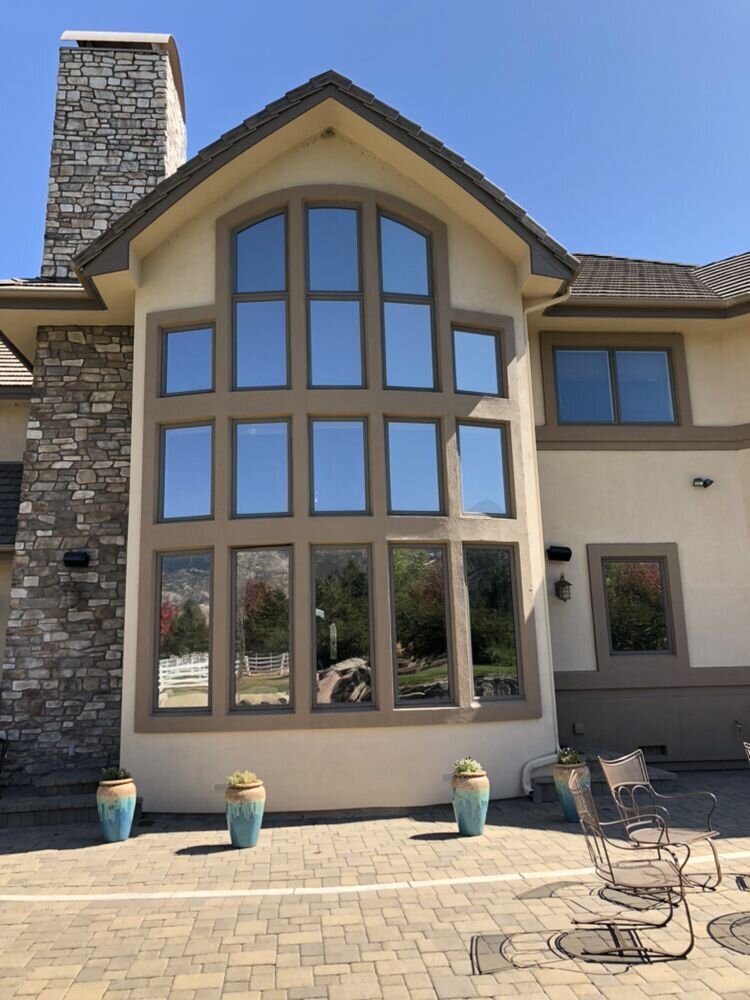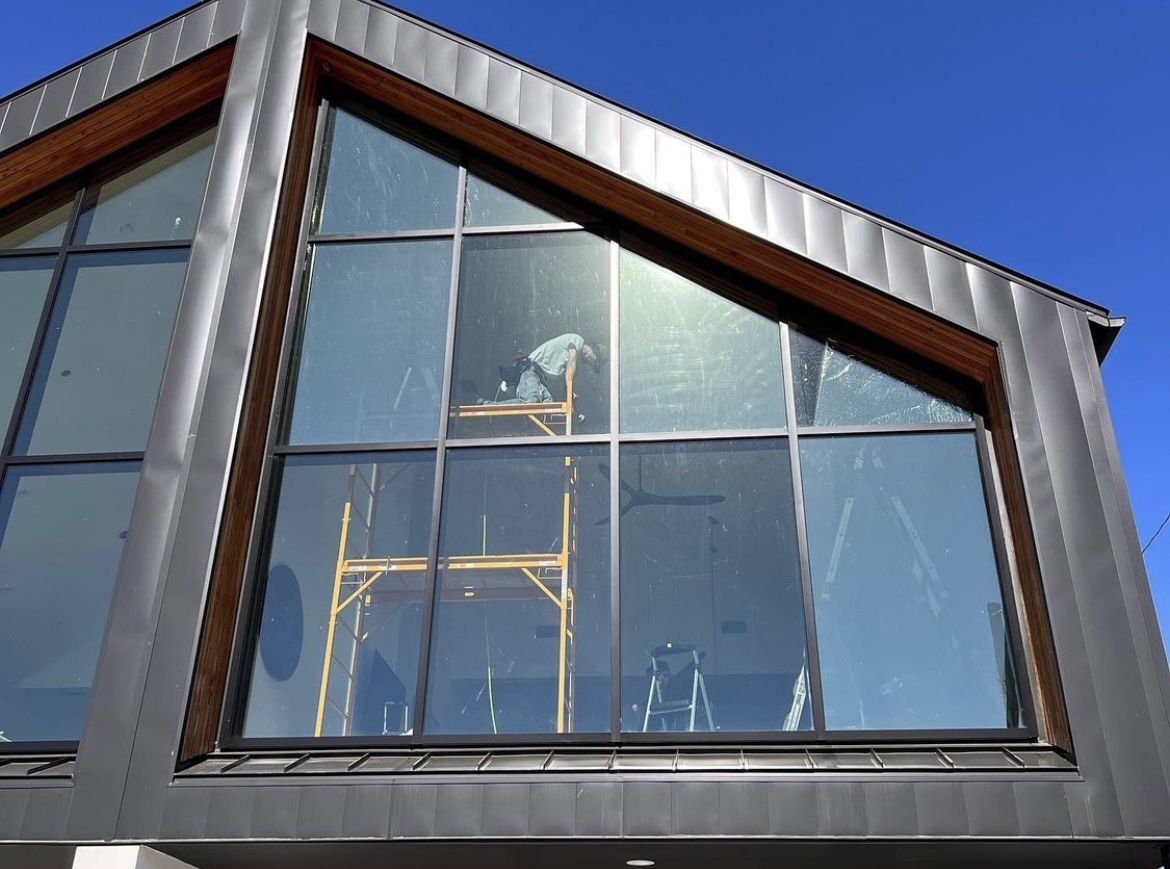Get Professional Suggestions on Choosing the very best Residential Window Tint for Your Needs
Get Professional Suggestions on Choosing the very best Residential Window Tint for Your Needs
Blog Article
How Residential Home Window Tinting Enhances Your Home's Power Effectiveness
Residential window tinting provides an engaging option for house owners seeking to improve power effectiveness within their space. By applying specialized movies to home windows, it effectively lowers warm transfer, thereby supporting indoor temperature levels and minimizing the requirement for too much heating or cooling. This not only cuts energy usage yet also provides a much more comfortable environment by mitigating glare. Nevertheless, recognizing the nuances of how tinting jobs and selecting the proper type for your home can be essential. Curiously, what variables should one take into consideration prior to making this investment?
Comprehending Home Window Tinting
Recognizing window tinting is essential for property owners looking for to improve both comfort and energy efficiency in their space. Residential Window Tint. Home window tinting entails the application of a thin film to the interior or outside surface of glass windows. This film can substantially regulate the quantity of sunlight and warm that goes into a home, hence influencing indoor environment conditions
There are numerous types of window tinting films available, each with distinct homes. The effectiveness of home window tinting is typically measured by its Visible Light Transmission (VLT) percent, which suggests exactly how much light can pass via the film.
Advantages of Power Effectiveness
Home window tinting not only enhances appearances however also plays a considerable function in improving power effectiveness within domestic rooms. By decreasing heat transfer via home windows, colored movies develop a much more steady indoor environment, which can lead to significant reductions in energy consumption for heating and air conditioning. This power performance equates into lower utility expenses, supplying homeowners with substantial long-term savings.

Furthermore, home window tinting boosts the convenience of living rooms. By lessening glow and blocking hazardous UV rays, colored windows develop a more positive atmosphere, which can lead to enhanced health for owners. The defense versus UV rays likewise helps maintain furniture and flooring from fading, adding to the durability of home products.
Exactly How Tinting Works
Tinting films operate through a mix of innovative materials and innovations designed to manage the quantity of solar power going into a home. Largely made up of polyester, these movies commonly include ceramic or metallic bits that reflect and soak up warmth. This double ability enables them to considerably minimize the infiltration of ultraviolet (UV) rays and infrared radiation while permitting noticeable light to pass through.
The effectiveness of home window tinting is measured by its solar warm gain coefficient (SHGC), which suggests just how much solar energy is transmitted through the window. Reduced SHGC values are better as they signify better heat denial. Furthermore, window colors can feature a selection of tones, permitting house owners to personalize their aesthetic choices while improving power performance.
Additionally, these films work as an obstacle, avoiding warmth loss throughout cooler months by reflecting interior heat back into the living area. This thermal insulation effect enhances the air conditioning advantages gained during warmer months, adding to a well balanced indoor environment year-round. By taking care of solar energy properly, property window tinting not just boosts comfort yet likewise plays a vital function in reducing power usage and lowering energy bills.
Picking the Right Tint

There are numerous kinds of window films readily available, consisting of colored, metalized, and ceramic. Dyed films are cost-effective but may have restricted longevity. Metalized films offer far better warmth rejection however can interfere my explanation with electronic signals. Ceramic films offer outstanding warmth control without jeopardizing visibility and are extremely sturdy, making them a popular choice.
Noticeable light transmission (VLT) is one more essential element, as it indicates the quantity of all-natural light that can go through the tinted glass. Homeowners should pick a tint with a VLT that complements their illumination preferences while still offering sufficient glow reduction.
Furthermore, examining the solar warmth gain coefficient (SHGC) can assist figure out exactly how well a color can block heat have a peek at this site from sunshine. A lower SHGC shows far better warm control, inevitably improving power efficiency.
Installation and Maintenance Tips
Appropriate setup and upkeep are important parts in making the most of the benefits of household home window tinting. To accomplish optimal outcomes, it is recommended to hire a qualified expert for installment. This makes sure that the color is used appropriately, preventing air bubbles, wrinkles, or imbalance that could jeopardize performance. Specialists likewise use specialized methods and devices, which can improve the sturdiness and effectiveness of the color.
Following installment, upkeep is necessary to extend the life of the home window movie. It is advised to wait at least 30 days before cleaning up the colored home windows to enable the glue to heal completely.
Addressing these problems immediately can prevent more damage and keep energy effectiveness. By adhering to these installation and upkeep tips, property owners can guarantee their window tinting proceeds to offer significant energy financial savings and convenience for years to come.
Verdict
To conclude, domestic home window tinting works as a reliable remedy for improving energy performance within homes. By lowering warmth transfer and blocking damaging UV rays, home window movies add to decrease power consumption and enhanced interior comfort. The selection of ideal tinting materials, together with proper setup and upkeep, further takes full advantage of these benefits. Inevitably, home window tinting stands for a sustainable financial investment that not just decreases energy expenses however additionally advertises a comfortable living setting throughout the year.
Window tinting entails the application of a thin film to the interior or exterior surface area of glass windows. By lowering warm transfer with windows, colored films create an extra secure interior environment, which can lead to substantial decreases in energy consumption for home heating and air conditioning.The performance of window tinting is determined by its solar heat gain coefficient (SHGC), which indicates just how much solar energy is transferred with the home window. By handling solar energy properly, property window site here tinting not only boosts comfort however additionally plays an important function in reducing power usage and reducing utility expenses.
By minimizing heat transfer and blocking harmful UV rays, window films add to decrease power usage and boosted indoor convenience.
Report this page